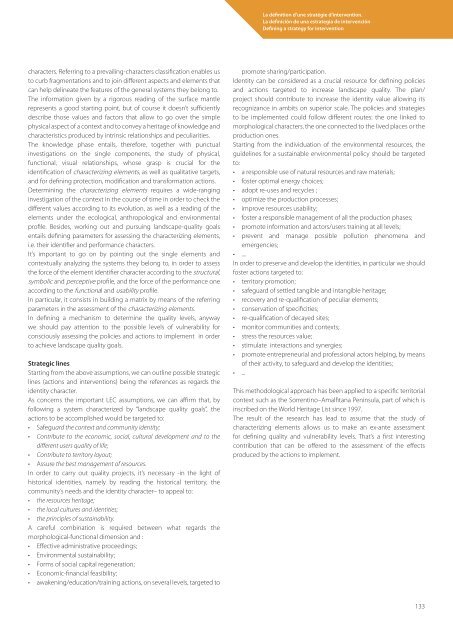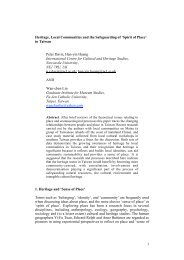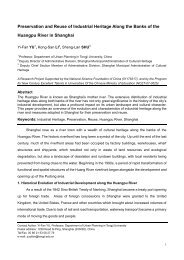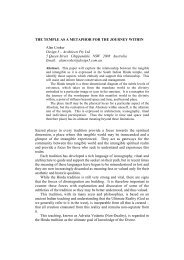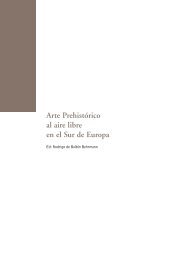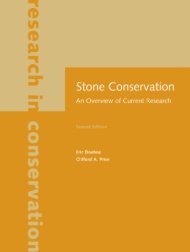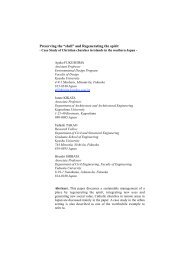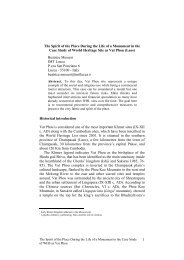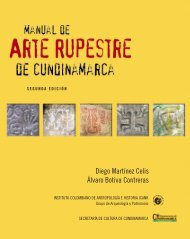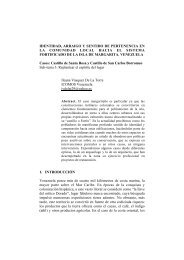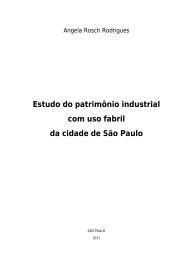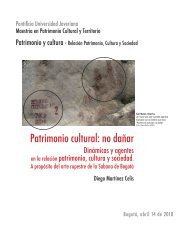La définition d'une stratégie d'intervention - ICOMOS Open Archive
La définition d'une stratégie d'intervention - ICOMOS Open Archive
La définition d'une stratégie d'intervention - ICOMOS Open Archive
You also want an ePaper? Increase the reach of your titles
YUMPU automatically turns print PDFs into web optimized ePapers that Google loves.
<strong>La</strong> définition d’une stratégie d’intervention.<br />
<strong>La</strong> definición de una estrategia de intervención<br />
Defining a strategy for intervention<br />
characters. Referring to a prevailing-characters classification enables us<br />
to curb fragmentations and to join different aspects and elements that<br />
can help delineate the features of the general systems they belong to.<br />
The information given by a rigorous reading of the surface mantle<br />
represents a good starting point, but of course it doesn’t sufficiently<br />
describe those values and factors that allow to go over the simple<br />
physical aspect of a context and to convey a heritage of knowledge and<br />
characteristics produced by intrinsic relationships and peculiarities.<br />
The knowledge phase entails, therefore, together with punctual<br />
investigations on the single components, the study of physical,<br />
functional, visual relationships, whose grasp is crucial for the<br />
identification of characterizing elements, as well as qualitative targets,<br />
and for defining protection, modification and transformation actions.<br />
Determining the characterizing elements requires a wide-ranging<br />
investigation of the context in the course of time in order to check the<br />
different values according to its evolution, as well as a reading of the<br />
elements under the ecological, anthropological and environmental<br />
profile. Besides, working out and pursuing landscape-quality goals<br />
entails defining parameters for assessing the characterizing elements,<br />
i.e. their identifier and performance characters.<br />
It’s important to go on by pointing out the single elements and<br />
contextually analyzing the systems they belong to, in order to assess<br />
the force of the element identifier character according to the structural,<br />
symbolic and perceptive profile, and the force of the performance one<br />
according to the functional and usability profile.<br />
In particular, it consists in building a matrix by means of the referring<br />
parameters in the assessment of the characterizing elements.<br />
In defining a mechanism to determine the quality levels, anyway<br />
we should pay attention to the possible levels of vulnerability for<br />
consciously assessing the policies and actions to implement in order<br />
to achieve landscape quality goals.<br />
Strategic lines<br />
Starting from the above assumptions, we can outline possible strategic<br />
lines (actions and interventions) being the references as regards the<br />
identity character.<br />
As concerns the important LEC assumptions, we can affirm that, by<br />
following a system characterized by “landscape quality goals”, the<br />
actions to be accomplished would be targeted to:<br />
ard the context and community identity;<br />
<br />
different users quality of life;<br />
<br />
Assure the best management of resources.<br />
In order to carry out quality projects, it’s necessary -in the light of<br />
historical identities, namely by reading the historical territory, the<br />
community’s needs and the identity character– to appeal to:<br />
the resources heritage;<br />
<br />
<br />
A careful combination is required between what regards the<br />
morphological-functional dimension and :<br />
<br />
<br />
<br />
<br />
<br />
promote sharing/participation.<br />
Identity can be considered as a crucial resource for defining policies<br />
and actions targeted to increase landscape quality. The plan/<br />
project should contribute to increase the identity value allowing its<br />
recognizance in ambits on superior scale. The policies and strategies<br />
to be implemented could follow different routes: the one linked to<br />
morphological characters, the one connected to the lived places or the<br />
production ones.<br />
Starting from the individuation of the environmental resources, the<br />
guidelines for a sustainable environmental policy should be targeted<br />
to:<br />
<br />
<br />
<br />
<br />
<br />
<br />
<br />
<br />
emergencies;<br />
<br />
In order to preserve and develop the identities, in particular we should<br />
foster actions targeted to:<br />
<br />
<br />
<br />
<br />
<br />
<br />
<br />
<br />
<br />
of their activity, to safeguard and develop the identities;<br />
<br />
This methodological approach has been applied to a specific territorial<br />
context such as the Sorrentino–Amalfitana Peninsula, part of which is<br />
inscribed on the World Heritage List since 1997.<br />
The result of the research has lead to assume that the study of<br />
characterizing elements allows us to make an ex-ante assessment<br />
for defining quality and vulnerability levels. That’s a first interesting<br />
contribution that can be offered to the assessment of the effects<br />
produced by the actions to implement.<br />
133


